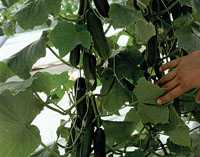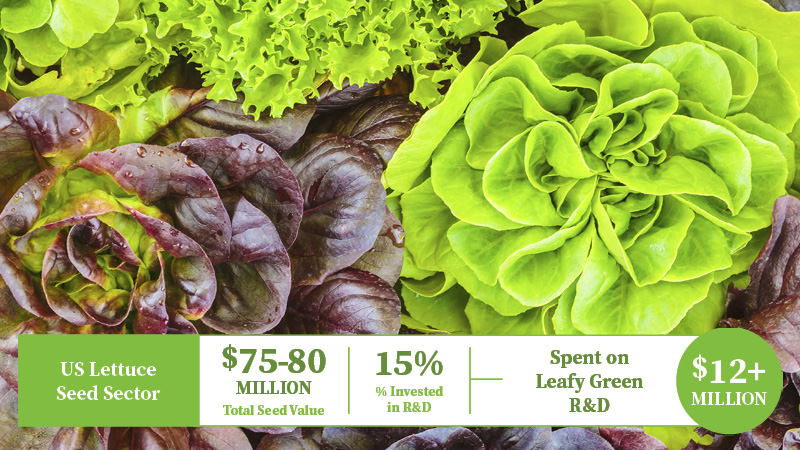Protected Production Provides Opportunity For Florida Growers


Field production dominates the Florida fruit and vegetable industry, but greenhouse growing is gaining ground. Tomatoes, cucumbers, lettuce, and peppers are currently the more common commercially produced crops under cover, but alternatives like herbs, melons, and strawberries are also being grown in the greenhouse. For these growers, greenhouse production offers a solution to ongoing weather and pest problems, increased governmental regulations, and the loss of methyl bromide.
Serving as a valuable research resource for greenhouse-grown crops is the University of Florida/Institute of Food and Agricultural Sciences’ Protected Agriculture Project (www.hos.ufl.edu/protectedag). Located at the Plant Science Research and Education Center in Citra, the 1-acre Protected Agriculture Project (PAP) includes computerized production systems in passively ventilated greenhouses.
Big Benefits
“The project demonstrates how vegetable and fruit crops can be produced on a year-round basis — not just when weather conditions or market windows are favorable for Florida growers,” says PAP leader Dan Cantliffe.
According to Cantliffe, the greenhouse structures — also known as plasticulture systems — can be built almost anywhere in the state, reducing problems associated with urbanization and loss of prime farmland in South Florida. The structures offer several benefits when compared to field-grown production: protection from pests when fitted with insect-exclusion screens (which reduce the need for pesticides), increased yields, reduced labor, precision control and recycling of nutrients and irrigation, as well as less weather worries.
“It helps growers who are increasingly concerned about more state and federal regulation of water, fertilizer, and pesticides,” says Cantliffe, chairman of UF’s horticultural sciences department.
Randall Dasher of Dasher Farm, an herb grower in McAlpin, says the biggest benefits of greenhouse growing are control, consistency, and quality.
For organic strawberry grower Allen Williford of Clear Choice Farms in Thonotosassa, the major benefits are protection from rain and certain diseases.
Cost Concerns
While the initial cost of greenhouse construction may be prohibitive for some growers, Cantliffe points out the price can be as low as $2 to $4 per square foot.
“Even with the higher prices of organic strawberries, it’s hard to justify the cost of the structure for an occasional bad-weather event,” admits Williford.
“Growing crops in a protected greenhouse environment will make Florida producers more competitive against imports from other areas in the world,” Cantliffe concludes. “If the vegetable industry in Florida is going to prosper and grow, there is a clear need for these new greenhouse production technologies.”
Here are a few examples of less-common greenhouse crops being produced in Florida:
| • Beit Alpha cucumber
High-yielding, small, seedless cucumber requiring no pollination; popular in Middle Eastern markets |
| • Datil pepper
Small hot pepper, related to habañero, but sweeter; used in sauces |
| • Galia muskmelon
An exotic, sweet hybrid from Israel; best-seller in Europe |









